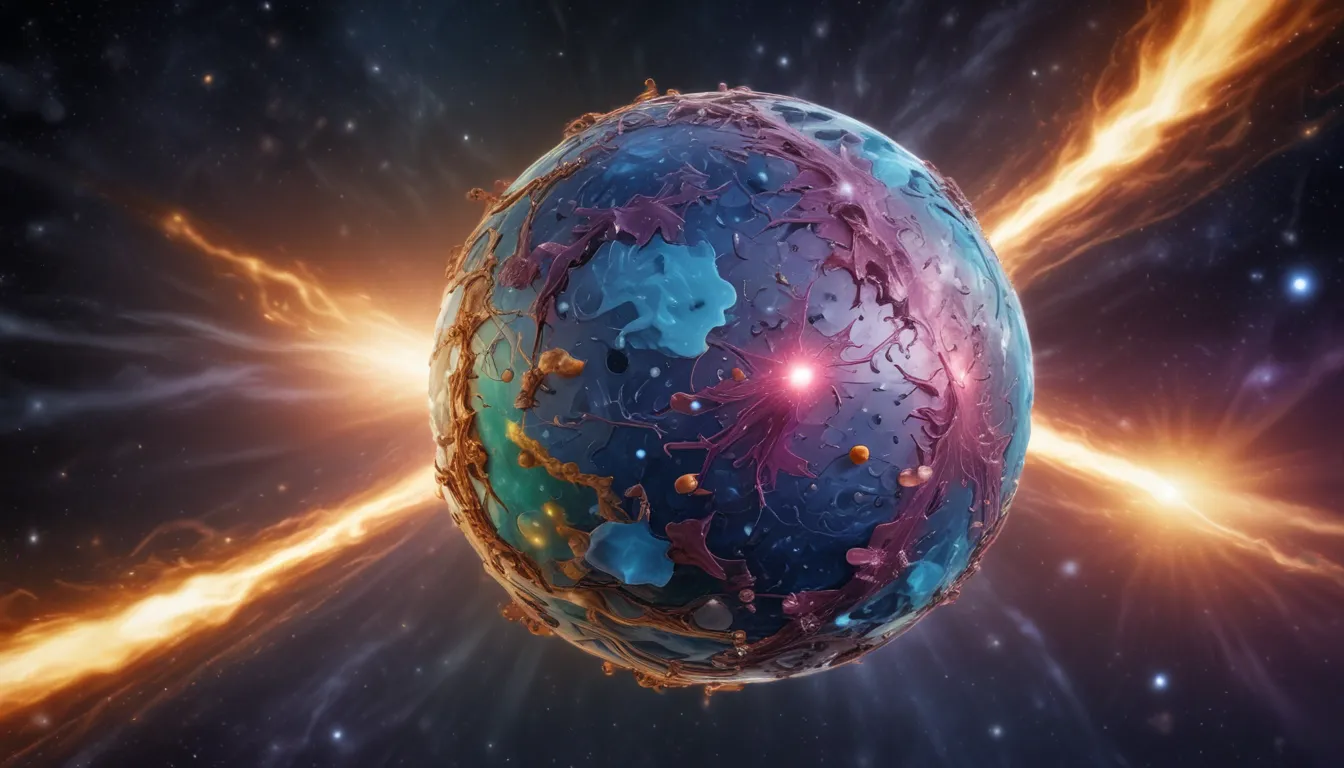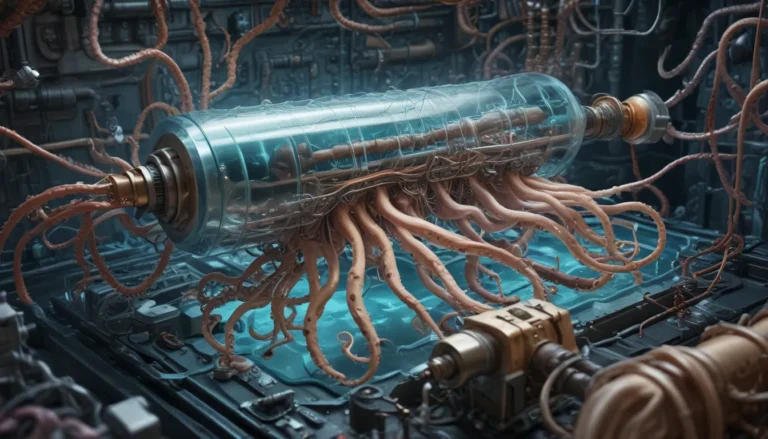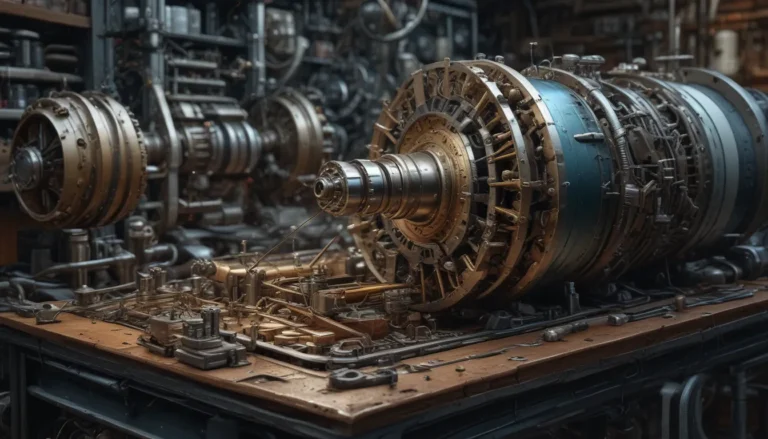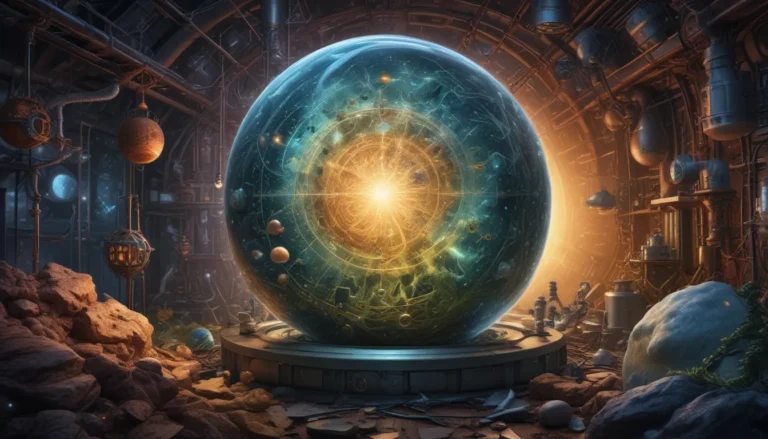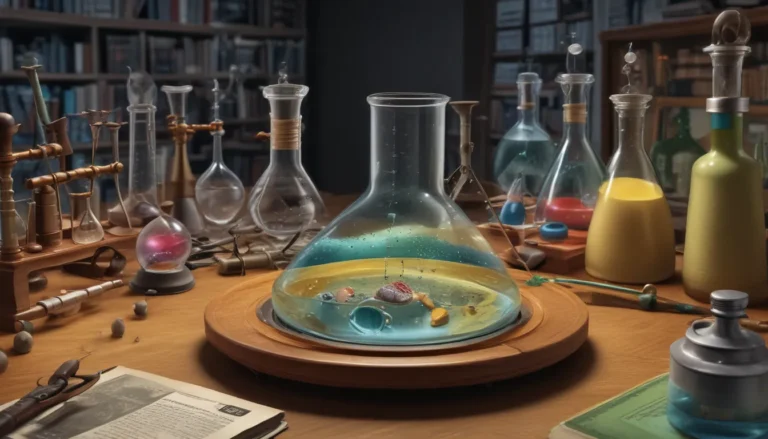A Note About Images: The images used in our articles are for illustration purposes only and may not exactly match the content. They are meant to engage readers, but the text should be relied upon for accurate information.
The study of quark-gluon plasma (QGP) is a captivating field that delves into the secrets of the fundamental building blocks of the universe. This unique state of matter, believed to have existed just milliseconds after the Big Bang, offers incredible insights into the nature of matter and the fundamental forces that govern the cosmos. In this article, we will explore 14 astounding facts about quark-gluon plasma, from its creation in high-energy particle collisions to its remarkable properties and implications for our understanding of the universe. So, buckle up and get ready to dive into the mind-boggling world of quark-gluon plasma and discover the mind-bending phenomena found within this extraordinary substance.
The Hottest State of Matter
Quark-gluon plasma is the hottest state of matter observed, reaching temperatures of several trillion degrees Celsius. Formed through high-energy collisions of heavy nuclei in particle accelerators like the Large Hadron Collider, it provides a glimpse into extreme conditions that existed shortly after the Big Bang.
A Short-Lived Existence
With an incredibly brief lifespan, quark-gluon plasma only exists for a fraction of a second before reverting back to individual quarks and gluons due to the intense temperature and energy present. This fleeting nature adds to its intrigue and challenges scientists to capture its essence.
Recreating the Early Universe
By mimicking the extreme temperatures and densities of the early universe, scientists believe that quark-gluon plasma can offer insights into the conditions that prevailed shortly after the Big Bang. It serves as a laboratory for studying fundamental particles and forces governing the universe’s evolution.
An Unusual State of Matter
Unique in its essence, quark-gluon plasma allows quarks, typically confined within particles like protons and neutrons, to move freely and interact with each other. This freedom of movement creates a highly fluid and perfect liquid-like state that defies conventional understandings of matter.
Color Charges and Gluons
Quark-gluon plasma derives its name from the color charge property carried by quarks, akin to the concept of color in everyday life. Gluons, responsible for binding quarks via the strong nuclear force, play a crucial role in maintaining the integrity of this exotic state of matter.
Evidence from Particle Collisions
Detection of quark-gluon plasma occurs through the observation of particles emerging from high-energy collisions. The production of specific particles like heavy quarks or J/? mesons signals the presence of the plasma state and guides researchers in unraveling its mysteries.
The Perfect Liquid
Often described as a near-perfect liquid due to its extremely low viscosity, quark-gluon plasma’s flow characteristics have led to fascinating parallels with the properties of black holes and the storage of information within them. This liquid-like behavior adds to its enigmatic allure.
Expanding in All Directions
Upon formation, quark-gluon plasma undergoes rapid expansion in all directions, leading to its eventual cooling and breakup. This expansion process allows individual particles to form and propagate, marking the transition from the plasma state back to ordinary matter.
Probing with Hard Probes
To delve deeper into the properties of quark-gluon plasma, scientists employ “hard probes” such as high-energy jets or heavy quarks. These probes pass through the plasma, interacting with its constituents and providing valuable insights into its dynamics and behavior under extreme conditions.
A Transition Phase
Believed to exist between ordinary matter and a confined state of quarks and gluons, quark-gluon plasma represents a transition phase known as the quark-hadron phase transition. This critical juncture is of immense interest to physicists seeking to understand the fundamental nature of matter.
Studying the Strong Nuclear Force
Quark-gluon plasma serves as a unique laboratory for studying the strong nuclear force, one of the four fundamental forces in nature. By examining how quarks and gluons interact within the plasma, researchers gain valuable insights into the intricate workings of this force and its implications for the universe.
Quantum Chromodynamics and QGP
Closely linked to the field of quantum chromodynamics (QCD), which describes the behavior of quarks and gluons, the study of quark-gluon plasma enhances our understanding of QCD principles. Investigating the properties of the plasma state sheds light on the underlying dynamics of quarks and gluons.
Simulating QGP with Supercomputers
The use of supercomputers in simulating quark-gluon plasma plays a pivotal role in deciphering its properties and behavior. These complex simulations enable researchers to model particle interactions in extreme conditions, validating theoretical predictions and enhancing our comprehension of this enigmatic state of matter.
Collaboration of International Researchers
Studying quark-gluon plasma necessitates international collaboration, with scientists from diverse countries and institutions coming together to share data, conduct experiments, and advance our understanding of the universe’s earliest moments. This collaborative spirit fosters innovation and drives groundbreaking discoveries in the realm of particle physics.
Conclusion
In conclusion, the study of quark-gluon plasma offers a captivating glimpse into the behavior of matter under extreme conditions, unraveling the secrets of the universe’s fundamental building blocks. From its ability to recreate the primordial moments of the universe to its intriguing parallels with black hole behavior, quark-gluon plasma continues to intrigue researchers and deepen our comprehension of the forces and particles shaping our cosmos. As technology evolves and new experiments unfold, we anticipate further remarkable discoveries in the realm of quark-gluon plasma, shedding light on the mysteries of the universe.
FAQs
- What is quark-gluon plasma?
-
Quark-gluon plasma is a state of matter that exists at exceptionally high temperatures and densities, characterized by the liberation of quarks and gluons, the fundamental constituents of protons and neutrons.
-
How is quark-gluon plasma studied?
-
Scientists study quark-gluon plasma through experiments conducted at high-energy particle colliders like the Large Hadron Collider (LHC), where heavy ions are collided at high speeds to recreate conditions akin to those following the Big Bang.
-
What insights can quark-gluon plasma provide about the early universe?
-
By replicating the extreme conditions postulated to have prevailed after the Big Bang, quark-gluon plasma enables researchers to explore the properties of the early universe and gain valuable insights into its evolution.
-
Are there practical implications of studying quark-gluon plasma?
-
While direct practical applications of quark-gluon plasma research are not immediately apparent, the fundamental knowledge acquired contributes to advancements in particle physics and our understanding of matter in extreme environments, potentially impacting future scientific endeavors.
-
How does quark-gluon plasma relate to black holes?
- Quark-gluon plasma exhibits properties reminiscent of those observed in black holes, such as the formation of event horizons and the emission of Hawking radiation. Exploring quark-gluon plasma offers valuable insights into the behavior of black holes and the fundamental nature of gravity.
Dive into the enthralling realm of particle physics and explore the intricate web of forces and particles that shape our universe. For an in-depth exploration of the strong interaction between quarks and gluons, delve into quantum chromodynamics—the key to unraveling the mysteries of the universe’s fundamental constituents.
